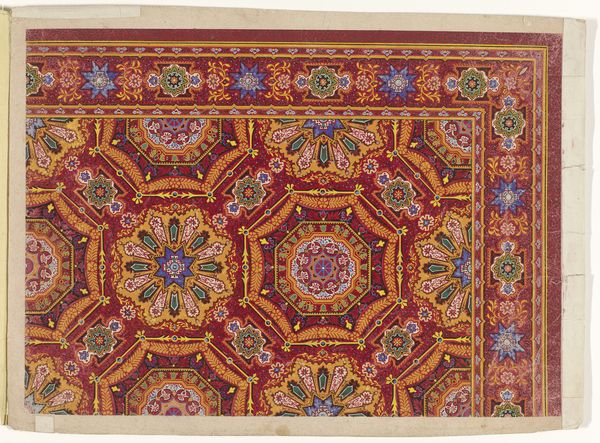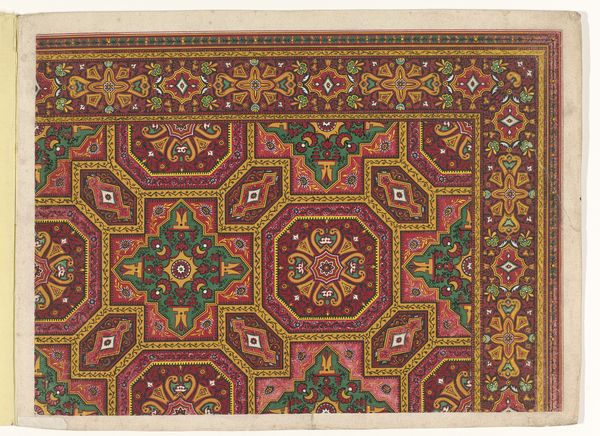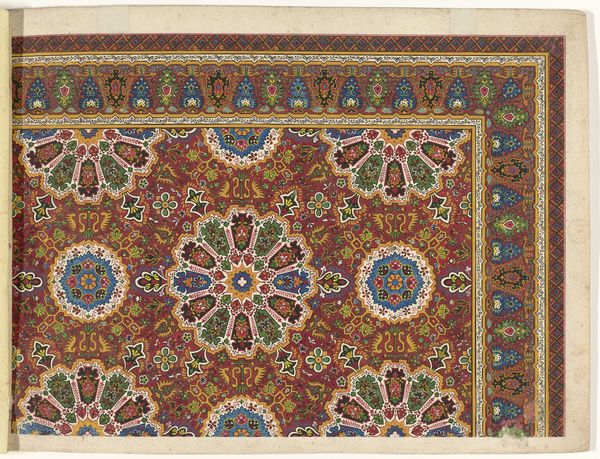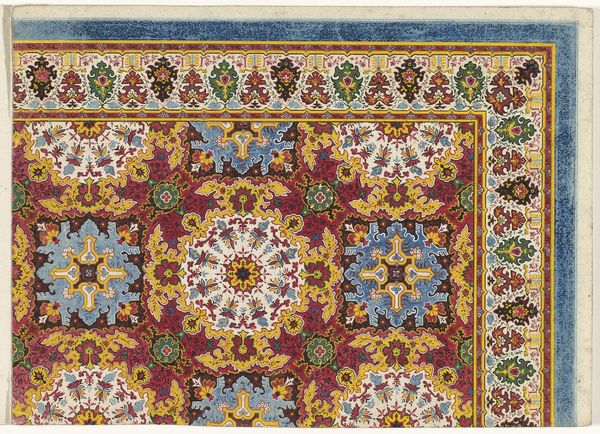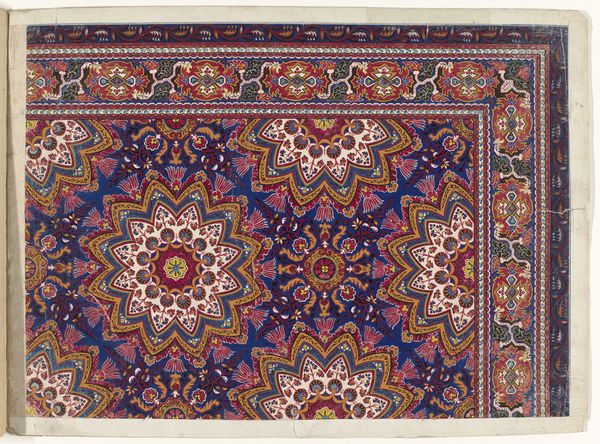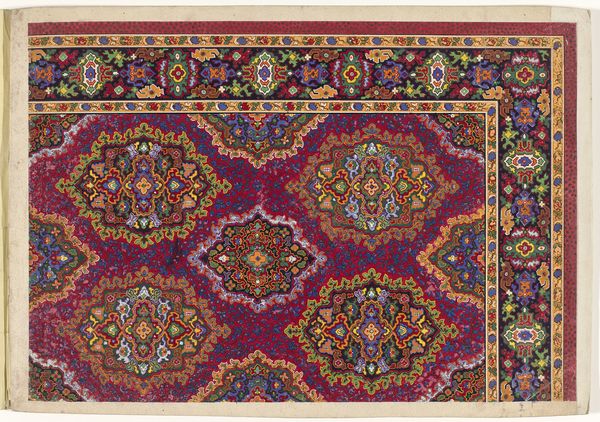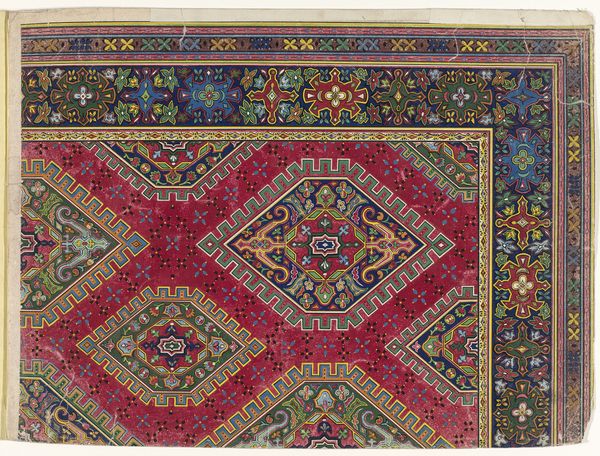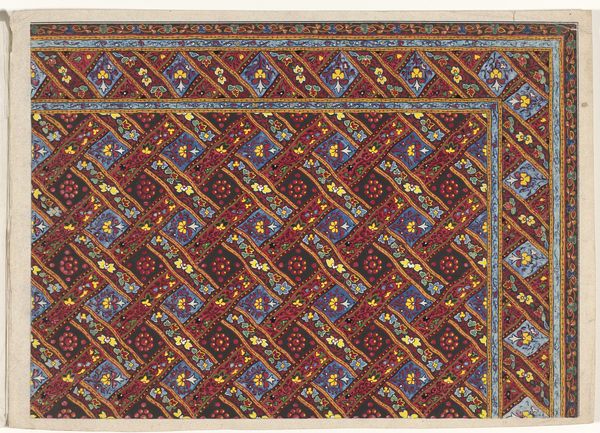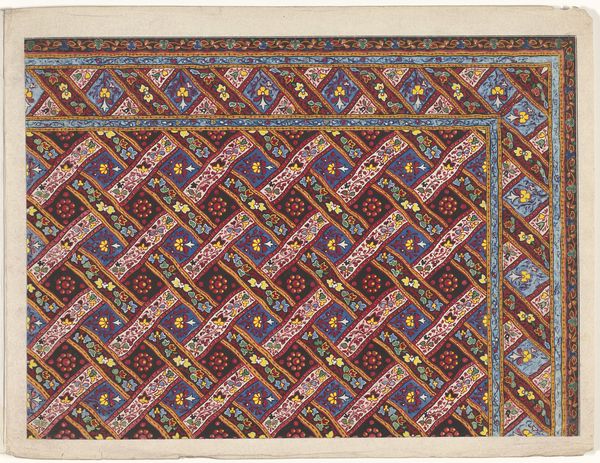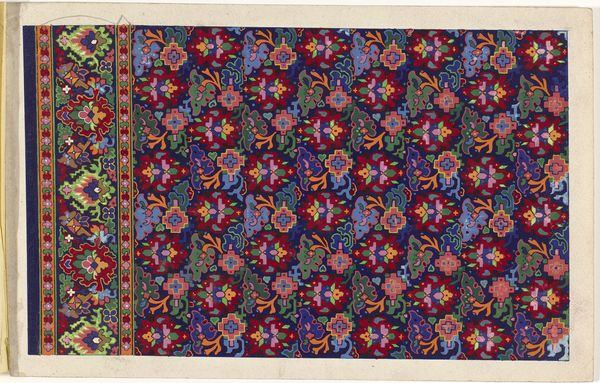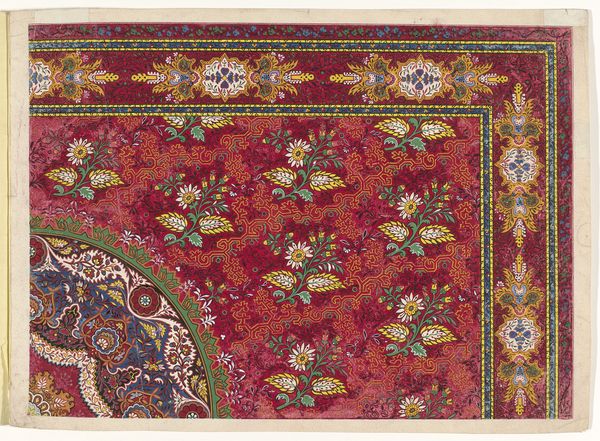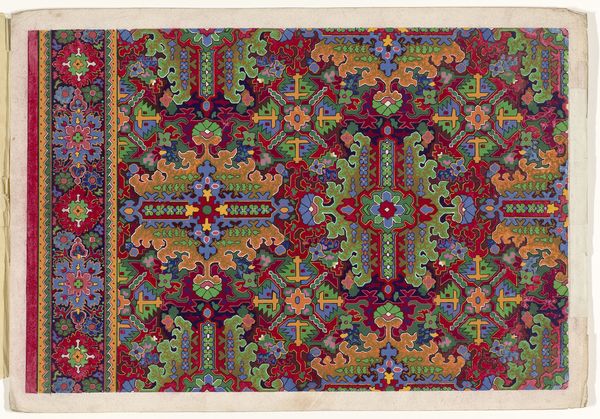
drawing
#
pattern heavy
#
drawing
#
natural stone pattern
#
naturalistic pattern
#
geometric pattern
#
pattern background
#
repetitive shape and pattern
#
ethnic pattern
#
geometric
#
repetition of pattern
#
pattern repetition
#
decorative-art
#
layered pattern
Dimensions: height 383 mm, width 283 mm
Copyright: Rijks Museum: Open Domain
Curator: Let's delve into this "Ontwerp voor een tapijt," or "Design for a Carpet," dating roughly from 1854 to 1864 by an anonymous hand. It is quite something, isn’t it? Editor: Yes, my first impression is the sheer density. The composition feels quite packed, yet the eye finds a rhythm amidst the repetitive patterns. The shades of deep red and gold are luxurious, hinting at rich materiality. Curator: Absolutely. And I think that density speaks to its time. Mid-19th century design was often about showcasing wealth through elaborate ornamentation. The geometric and floral motifs are rendered in astonishing detail here. Consider also the rise of Orientalism at the time and the influence on decorative arts. Editor: That's fascinating! Seeing it as part of a broader phenomenon of Orientalism really changes how I understand this piece. It also has me thinking about the labor involved. Was this a presentation piece, showing off potential craftsmanship? You can just imagine someone painstakingly weaving all this into a fabric. Curator: It definitely speaks to skill and craft. The regularity of the patterns suggest industrial replication might have been the ultimate aim, the original probably required a textile worker for their creation; although there may have been a push to implement machines to increase textile productivity at this time. How would you speak on the design from your side, perhaps focusing on materials used in tapestries. Editor: I think examining wool qualities, dye sources (natural versus chemical at that period), and potential weaving techniques gives us a greater social sense of the tapestry. And you've really provided critical insight into its placement and broader function and placement in society. Curator: Well, looking at this carpet design I begin to see how even in what appears to be a simple domestic object carries these deeper societal markings and influences. Editor: And I’ve come to appreciate how social tastes influenced choices in materiality and modes of making during that historical period, to deliver the desired effect of the piece.
Comments
No comments
Be the first to comment and join the conversation on the ultimate creative platform.
